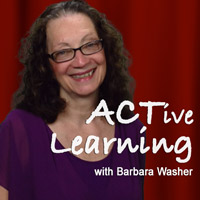| K , 1 , 2 , 3 , 4 , 5 | |
| Theater | Social Studies English |
| Grade Level Program | Integration |
| 5 | 45 min |
|
45-60 minute sessions with a culminating grade-level share. Number of visits is flexible and are typically held once or twice a week to best integrate with selected Language Arts unit . Schedule determined during the pre-planning meeting based on the needs of the school. |
|
| In-School Short Term Residency | |
| All Year | In-School, |
| $10 | 0 |
| yes | In-Person |
|
Props, handouts, prompts or reference materials based on selected unit or topic Original of script created by the class for student and/or teacher use |
|
|
Chart paper or white board Agreed upon materials or copies Non-lined paper for each student (Grades 3-5) Copy of selected Language Arts unit or chapter and related text |
|
|
Open space in classroom or multi-purpose space large enough for entire class to participate on their feet simultaneously or spread out to work in small groups A large space or auditorium reserved for Session 4 and Session 5, if sharing with the whole grade level |
|
|
I can identify the literary elements of character, setting, events and theme and describe them in a grade-level story. I can use body, gesture and/or voice to create the setting, communicate characters and demonstrate plot from a grade-level story. I can collaborate with peers to apply elements of dramatic structure to a grade-level story and create a drama/theatre piece to share informally with an audience. |
|
|
Reading Success = Students' Superpower! Teachers may select any literary or informational text from the language arts, social studies, or science curriculum. The Teaching Artist then aligns specific drama activities with the selected content to fully support student learning. (See Additional Notes for examples and grade level adaptations) The residency typically consists of 5 sessions with possible teacher directed classwork in between. Each meeting incorporates a warm-up, a brief review, 1-2 drama activities, moments of self-reflection, a summary, and a preview. Session 1 introduces students to drama and develops comfort and confidence working simultaneously "Alone Together" to focus attention and physically create abstract shapes using movement, freezes and levels. Sessions 2 and 3 build on what students already know from guided readings of a story, a book or poetry, to explore transforming into a wide array of characters, animals, objects, and components of setting. Rather than "casting parts", the program emphasizes an ensemble approach, allowing each child to portray all elements of the text. Students work individually, with partners, and in small/large groups to brainstorm, problem-solve, improvise, reflect, and revise as they create tableaux, movement, dialogue, and/or narration. Session 4 encourages cooperation and collaboration as the class develops an original version of the text. Session 5 empowers students to present/observe and give/receive feedback, solidifying their learning in both language arts and drama. In Putting a Tale on its Feet, movement and improvisation activities focus on personal exploration assuring equal participation, as each child builds comprehension and retention. Drama games help all children discover and communicate meaning from even the most challenging text. Imagination and creativity extend the journey beyond the basics of showing and telling, into the excitement and accomplishment of being and doing. |
|
|
Putting a Tale on its Feet has been successfully adapted to all ages, grades and reading levels. Younger children enjoy exploring character, events, and setting as they act out a story while a teacher or their peers read it aloud. Older students expand on who, what and where; embracing the challenges of delving into situation, motivation, and theme as they improvise scenes and create their own dialogue for the story.
Choose any language arts, social studies or science text or select one of the previously requested texts/themes shown below: Original poem written and presented by each class, modeled on selected poetry types and linked to various science units Patience Wright, America's First Sculptor and Revolutionary Spy by Pegi Deitz Shea (Colonial America) The Jungle Book by Rudyard Kipling, Mossy by Jan Brett (Habitats/Home) Skippy Jon Jones by Judy Schachner, Esperanza Rising by Pam Munoz Ryan (Multicultural) George and Martha by James Marshall, Charlotte's Web by E. B. White (Friendship) A River Ran Wild by Lynn Cherry, Thirteen Moons on Turtle's Back by Joseph Bruchac and Jonathan London (Nature/Environment) Poetry by Shel Silverstein, Jack Prelutsky, or Douglas Florian Poetry about various reptiles and mammals Aesop's Fables *All ACTive Learning Through Drama programs have been developed and implemented by a professional theatre educator in collaboration with classroom teachers and arts specialists. |
|
|
1-3 are welcome to assist in the classroom, if the teacher desires. Parents, guardians and administrators could watch the informal share in Session 5. |
|
Grade K |
||||
|
||||
Grade 1 |
||||
|
||||
Grade 2 |
||||
|
||||
Grade 3 |
||||
|
||||
Grade 4 |
||||
|
||||
Grade 5 |
||||
|

